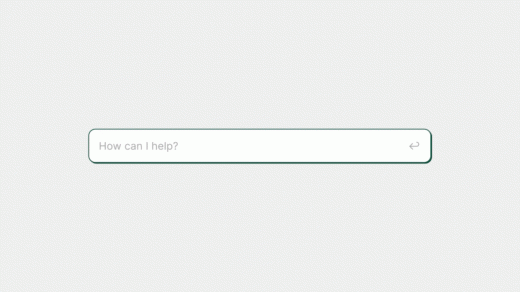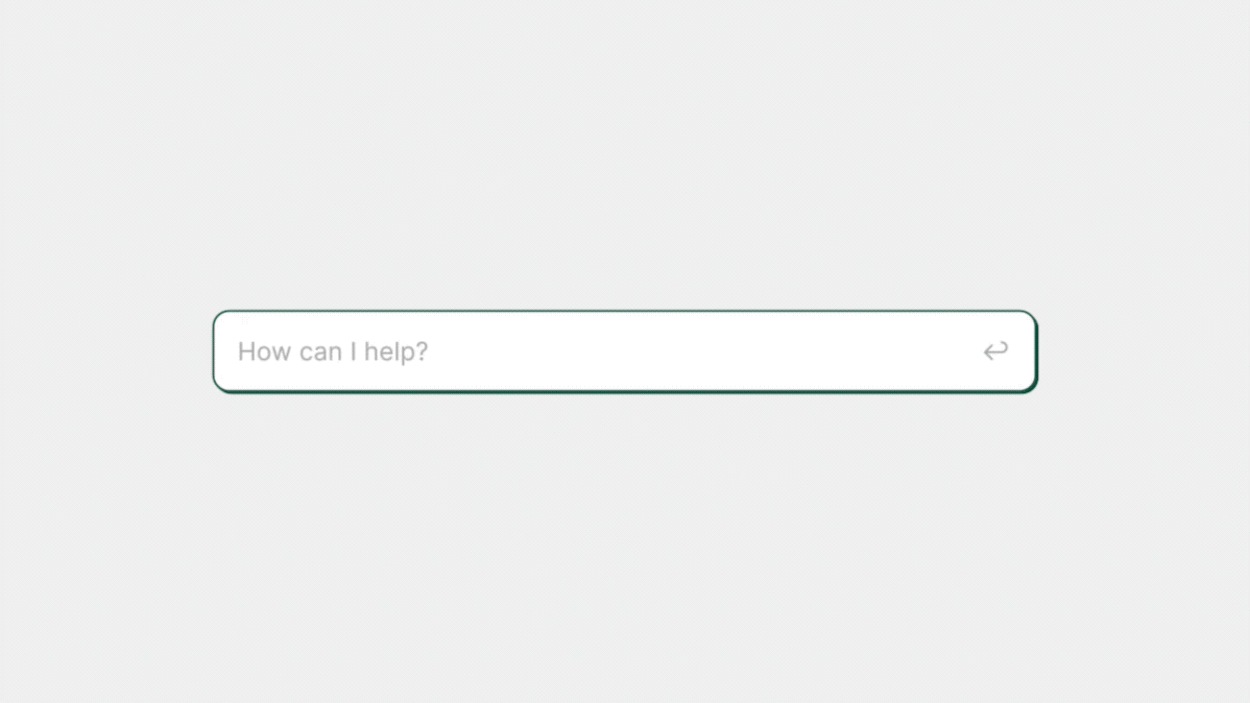Clockwise is using GPT-4 to schedule ‘impossible meetings’
When Matt Martin, the cofounder and CEO of calendar management company Clockwise, received a sudden opportunity to pitch a Fortune 500 company last year, he had no choice but to skip his staff meeting that was happening at the same time.
That in turn led to scheduling headaches throughout the company, as Martin had to call a catch-up meeting to nail down Clockwise’s quarterly objectives. “The additional meeting completely destroyed schedules—and not just my staff team, but the whole company, because when I forced them to meet again, they had to clear meetings they already had with their team, and so on,” Martin says.
It’s the kind of problem Clockwise now believes it can solve with AI. Today, the company is releasing a basic AI scheduler that can turn natural language requests into meeting proposals. Later this quarter, it plans to launch a more advanced version, one that can rearrange an entire team’s calendars when something more urgent comes up.
In the long run, Martin hopes Clockwise AI will change the way people think about meetings in the first place.
“This might sound corny, but I truly believe this is one of the biggest modality shifts in calendaring in hundreds of years,” he says.
Doing what Siri can’t
Clockwise, founded in 2016, is a tool that helps companies schedule meetings more efficiently. Each employee sets up preferences, such as their usual working hours, how many meetings they like to have in a row, and how much focus time they need per day. Clockwise then accounts for those preferences when it suggests potential meeting times. Workers can also mark meetings as “flexible,” which allows Clockwise to shift times automatically as the need arises.
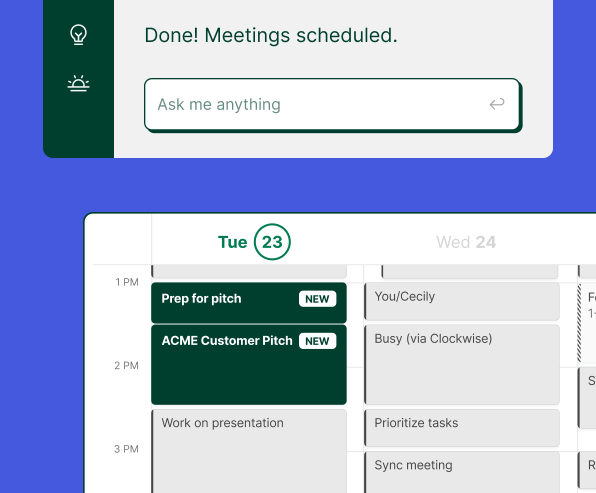
Until now, setting up meetings through Clockwise required navigating a set of menus, be it through Clockwise’s website, its browser extension, or integration with apps like Slack. An update rolling out now will allow users to find meeting times through natural language prompts.
In Slack, for instance, users can mention (via the “@” sign) Clockwise with a request like “find a time to meet with Gary on Monday.” Clockwise will then evaluate both users’ calendars and preferences, and will suggest a handful of ideal times. The app will also support commands like “clear my schedule for tomorrow” and present options to rearrange or cancel any affected meetings.
“We can actually deliver a virtual assistant that has knowledge about those preferences for every single person in an organization, and everyone you want to schedule with, so it can create the best times for everyone,” Martin says.
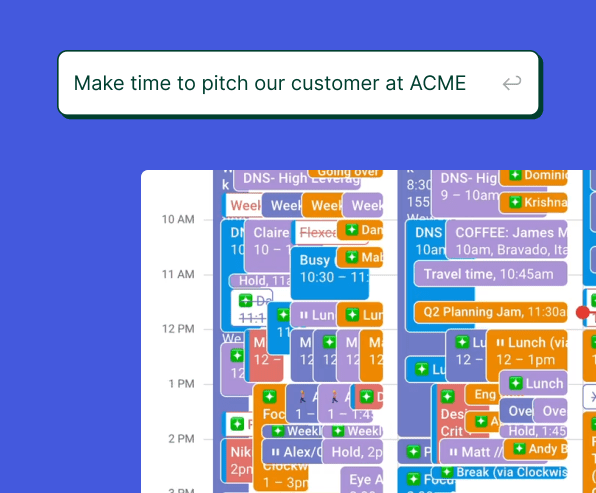
Creating calendar invites with natural language isn’t a new concept. The popular calendar app Fantastical was parsing those kinds of requests back in 2011, and virtual assistants, such as Siri and Alexa, can set up calendar events using only voice commands. The difference with Clockwise is that it’s accounting for each invitees’ meeting preferences and availability.
This is trickier than it might sound. Clockwise AI is using OpenAI‘s GPT-4 large language model not just to understand the initial request, but to process all the information the company has about team members’ meeting preferences. Previous large language models weren’t up to the task, as they’d often botch concepts like “next Monday” or “sometime next week.”
Clockwise believes that with GPT-4, the technology is finally ready.
“That’s really what the power is—it’s taking that preference stack and scheduling engine, and marrying it with GPT,” says Gary Lerhaupt, Clockwise’s cofounder and CTO.
The impossible meeting
Later this quarter, Clockwise plans to launch a more ambitious version of its scheduling assistant, one that can address the kind of urgent meeting scenario that Martin went through last year.
In a demo, Martin showed how he could ask Clockwise’s AI for a priority meeting at a specific date and time, while also requesting to reschedule the company’s staff meeting and any one-on-one follow-ups. In response, the assistant produced a list of potential changes, factoring in all staff members’ schedules and preferences.
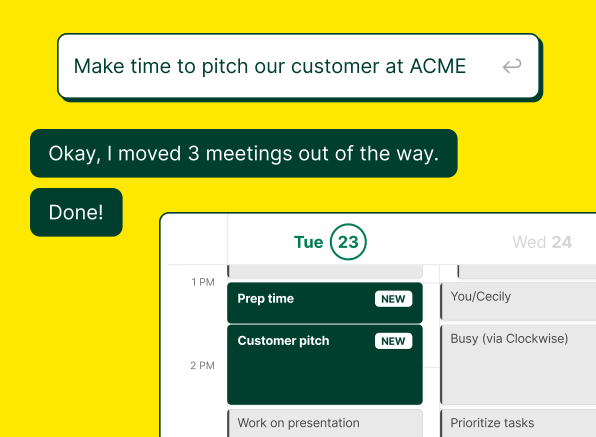
“One of the things we’re really excited about is, we started to go down this path where we’re building out the ability to schedule where there’s literally no time,” Martin says.
Prior to experimenting with GPT, Clockwise had been developing a more standard menu system for this kind of scenario, but Lerhaupt said it was starting to resemble an “airplane cockpit control” with its array of buttons and inputs. The company has now scrapped plans for an urgent-meeting interface and is going all-in on AI for these kinds of queries.
“Being able to parse and understand the user’s intent—like, what do they want to accomplish?—is so huge,” Martin says.
Succeeding where chatbots failed
Clockwise wasn’t always so sure that virtual assistants were the future, as other companies had gone down that path without much success.
The most notable example is X.ai, a startup that attracted a lot of buzz during the great chatbot hype cycle of 2016. X.ai offered an AI scheduling assistant that users could loop in via email, at which point it would handle the back-and-forth of finding a time to connect. But it turned out that X.ai was leaning on humans to help facilitate the scheduling process. (Bizzabo, a maker of event management software, acquired X.ai in 2021 and promptly shut it down.)
Martin says that in Clockwise’s early days, he and Lerhaupt deliberately avoided categorizing their software as a scheduling assistant, wary of making promises they couldn’t keep. That proved to be the right call, as chatbots failed to resonate with users, and companies backed away from the concept.
“The minute you anthropomorphize something into an assistant, all of a sudden people’s expectations are going to be way, way up here,” Martin says.
Now, though, Clockwise is giving serious thought to embracing the assistant label. They’ve even discussed building a chat interface for Clockwise’s core setup, in which users specify their working hours and meeting preferences.
That sounds a bit like the initial promise of chatbots, which were meant to strip away complex computer interfaces in favor of a simple dialog box. But whereas early chatbots would often fail to understand users’ intent and respond in overly robotic ways, ChatGPT has already shown that it can be convincingly humanlike.
Clockwise believes that by combining this breakthrough with what the company knows about people’s scheduling habits, it can create a humanlike scheduling assistant as well—and that users won’t want to set up meetings any other way.
“We just think this is going to become the dominant modality that people [use to] interact with their calendar,” Lerhaupt says.
(30)

